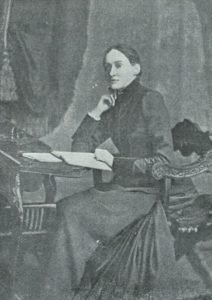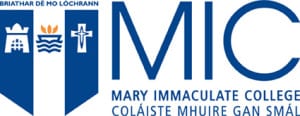Rosa Mulholland, Digital Renaissance and Digital Humanities in Trier, Germany
Citation: Brassil, G. and K. Laing. (2025) ‘Rosa Mulholland, Digital Renaissance and Digital Humanities in Trier, Germany’, IWWN Blog, date of posted entry. Available at (accessed date)
Geraldine Brassil and Kathryn Laing
In March 1909 Rosa Mulholland’s short story, ‘Krescenz: An Idyll on the Moselle’, was published in the Irish Monthly, a literary magazine established and edited by the Jesuit Fr Matthew Russell in 1873.[1] Mulholland was a core author almost from its inception, and the story of Krescenz is one of at least 300 of her contributions to the Irish Monthly that included short stories, serialised stories, poems, dramas and a range of non-fiction. This bibliographical information is stored in a comprehensive dataset that we have created specifically for our Rosa Mulholland Project (see Figure 1).[2] Aligning with the aims and focus of the Irish Women’s Writing Network (1880-1920), the project includes the recovery, recording and mapping of Mulholland’s prolific publishing life, from the earliest identified publication in 1862 to the year of her death in 1921.[3] Building this resource by trawling through digitised and other archives remains a painstaking process.[4] How to organise a significant collection of cultural metadata already gathered from late nineteenth-century newspaper and magazine articles/essays/stories, for example, and making these visible and accessible for readers and scholars, is another challenge.
Read MoreRe-examining Wilde in The Woman’s World
Eleanor Fitzsimons
How to cite: Fitzsimons, E. (2024) ‘Re-examining Wilde in The Woman’s World’, IWWN Blog, date of posted entry, Available at https://irishwomenswritingnetwork.com/blog/ (Accessed date)
‘Society began to take Oscar Wilde seriously when he became editor of the Woman’s World.’
Anna de Brémont in Oscar Wilde and His Mother (1911)[1]
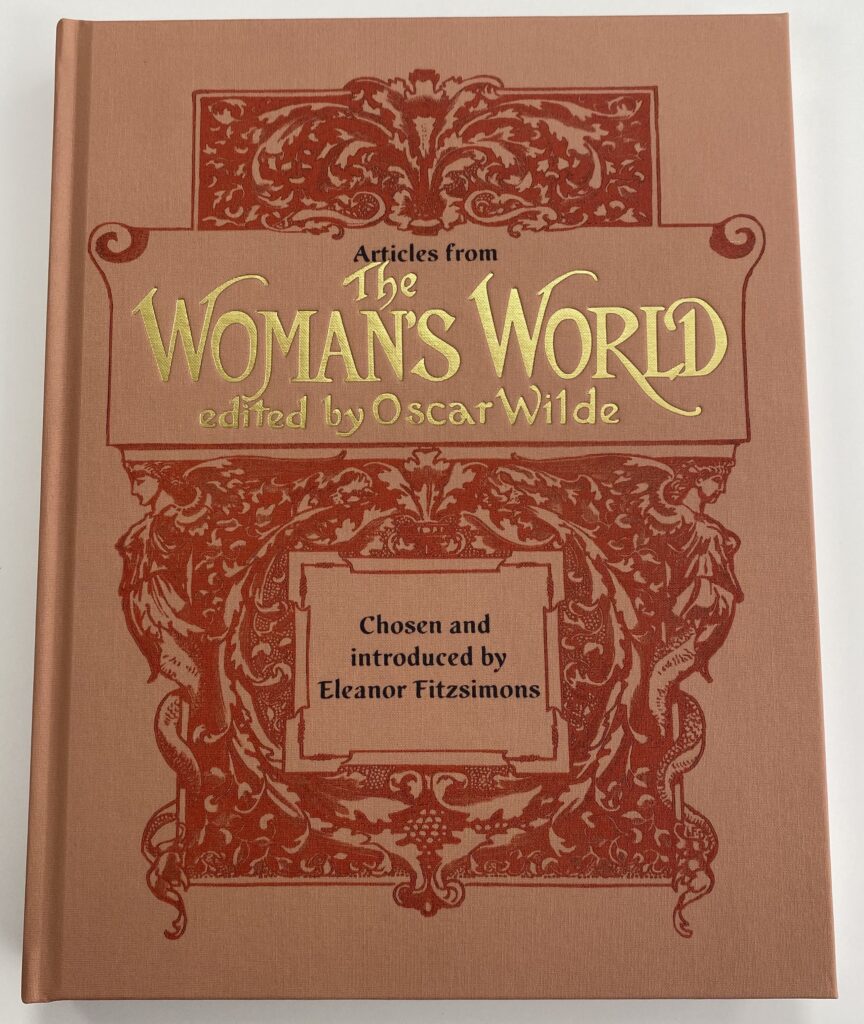
In 2023, the Oscar Wilde Society, of which I am an honorary patron, commissioned me to compile Selected Articles from The Woman’s World, a project made possible through the generosity of Mrs. Joan Winchell, who also supported the publication of Constance Wilde’s Autograph Book 1886 – 1896, edited by society member Dr Devon Cox. My project continues an ongoing process of retrieving the lesser-known writings of Wilde and his circle. While digitised issues of The Woman’s World are available online, this project allowed me to provide a comprehensive account of Wilde’s time as editor, to add contextualising notes for a modern readership, and, most importantly, to write biographical profiles for many of Wilde’s contributors, all of them deserving of greater attention. Thirty articles were selected to represent the breadth of topics Wilde’s contributors tackled. Several showcase the distinctive artwork that influenced the design of his beautiful, aesthetic books; Charles Ricketts and Walter Crane, among others, produced illustrations for The Woman’s World before collaborating with Wilde.
Read MoreMary Banim and Goldsmith’s Country
Dr Geraldine Brassil
How to cite: Brassil, G (2024) ‘Mary Banim and Goldsmith’s Country’, IWWN Blog, date of posted entry, Available at https://irishwomenswritingnetwork.com/blog/ (Accessed date)
Kilkenny brothers and writing partners John (1798-1842) and Michael (1796-1874) Banim are described by James H. Murphy as ‘important Catholic writers.’[1] However, the name Mary Banim (c.1847-1939), the youngest of Michael Banim’s three daughters, has little resonance. She remains an obscure figure despite the fact that she was a published author and travel writer. With her sister Matilda, an illustrator, she travelled around Ireland gathering material for her travelogue. While the sisters appear to have spent formative years living in Belgium, Mary Banim proudly presented herself as an Irish woman, and one who understood and was deeply sympathetic to the regional and rural communities that she encountered on her travels.
Read MoreOnline Saturday Writing Group
The Irish Women’s Writing Network (1880-1920) has recently started a virtual writing group which takes places one Saturday a month. This writing group provides a virtual space for like-minded researchers and creative areas with an interest in Irish women’s writing to set some individual writing goals, chat over a virtual cup of coffee, and then write with cameras on for a few hours. At the end of the sessions, we chat about how everyone found their progress and open up for swapping of resources, guidance on research, or general support. These sessions are intended to be informal but productive and, with the turn in weather, Sat 19th October is the perfect way to spend a cosy autumn Saturday morning. Whether working on a conference abstract, a thesis chapter, journal article, a poem, or a blog, we hope to see you there!
Email IrishWomensWritingNetwork [@] gmail.com to be involved or scan the qr code below
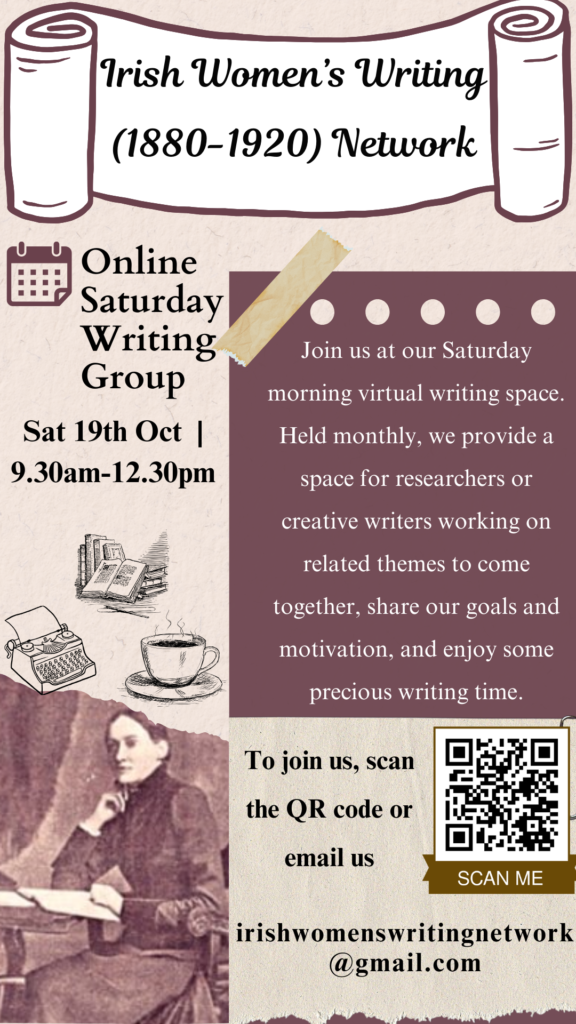
Teaching Irish Women’s Writing Abroad
Maureen O’Connor
There are always new audiences for Irish women’s writing of the fin de siècle period, as I discovered when I recently spent six months at the University of Würzburg in Germany, as the Travelling Visiting Professor of Irish Studies, a position funded by the Irish Department of Foreign Affairs, specifically through the Emigrant Support Programme of the Irish Embassy in Berlin. In addition to teaching Irish literature seminars at various levels in Würzburg, from first-year to MA, I travelled to other German universities to deliver talks on Irish literature. I prepared a number of topics to offer the organisers of these events at each institution, and fin-de-siècle topics were chosen by two universities. At the University of Wuppertal, I spoke about ‘First-Wave Irish Women Writers and the Redefinition of Sex,’ focusing on the work of Eva Gore-Booth and Margaret Cousins. That talk is a version of a conference paper I delivered in 2019 at the Society for the Study of Nineteenth-Century Ireland conference in Leicester, ‘Dreams of the Future in Nineteenth-Century Ireland’. In Saarland University, in Saarbrücken, the chosen subject was ‘The Women Writers Who Challenged the Irish Literary Revival: Alice Milligan, Eva Gore-Booth, Hannah Lynch’, based on a contribution to a forthcoming Cambridge University Press collection, Irish Revivals, edited by Gregory Castle. Both talks were delivered in November of 2023.
Read MoreWriting the Aran Islands: The Curious Case of Nurse B. N. Hedderman
Theo Joy Campbell
District Nurse B. N. Hedderman’s 1917 memoir, Glimpses of my Life in Aran, was a puzzle I needed to solve.[i] I first stumbled upon it while researching J. M. Synge and his famous 1903 travelogue The Aran Islands. After reading Glimpses, I was surprised to learn that Hedderman almost never appears in contemporary scholarship about Synge’s book. Scholars often read The Aran Islands in conversation with contemporaneous Aran nonfiction, like Úna Ní Fhaircheallaigh’s Smaointe ar Árainn (Thoughts on Aran) and C. R. Brown and Alfred Haddon’s “The Ethnography of the Aran Islands,” particularly when they are considering Synge in the context of colonialism. Hedderman’s memoir seemed like an illuminating addition to this conversation—she had spent far more time on the islands than Synge or Ní Fhaircheallaigh but her often condescending tone landed closer to that of Haddon and Brown. Hedderman grippingly details the harsh realities of rural poverty, but her claim that the islanders were full of “black ignorance” and her choice to call their customs “barbaric” seem to reproduce Anti-Irish propaganda. Her tone cuts against everything the Irish revival was trying to accomplish. Why would a woman who lived nearly two decades among the islanders, who regularly risked her life to save theirs, replicate the rhetoric of their oppressors? And why was no one talking about her, at least in literary scholarship? Further fuelling my curiosity was the lack of personal details in the book, despite its claim to be a memoir: I did not know whether Hedderman was Catholic or Protestant, whether she knew any Irish at all before arriving on Aran, or even what her first name was, much less how she may have felt about Irish nationalism or the cultural revival movements.
Read MoreWomen Writers of the Catholic Literary Revival in England and Ireland: An Argument for Revaluation
Julia Meszaros
The large-scale socio-cultural and political shifts of the late nineteenth century are reflected in the era’s vibrant literary culture. In Britain and Ireland, the years between 1860 and 1960 saw a particularly dynamic literary resurgence among Catholic writers. Catholic emancipation, marked by the re-establishment of the Catholic hierarchy in 1850, meant that after centuries of persecution and marginalisation British Catholics were finally able to return to public life and the arts. By 1900, Catholic literature was seeing a Revival that we now associate with well-known names such as those of John Henry Newman, Gerard Manley Hopkins, Hilaire Belloc, Robert Hugh Benson, G. K. Chesterton, Graham Greene and Evelyn Waugh.
Read MoreWINIFRED M. LETTS (1882-1972): The Writer I Knew
Bairbre O’Hogan
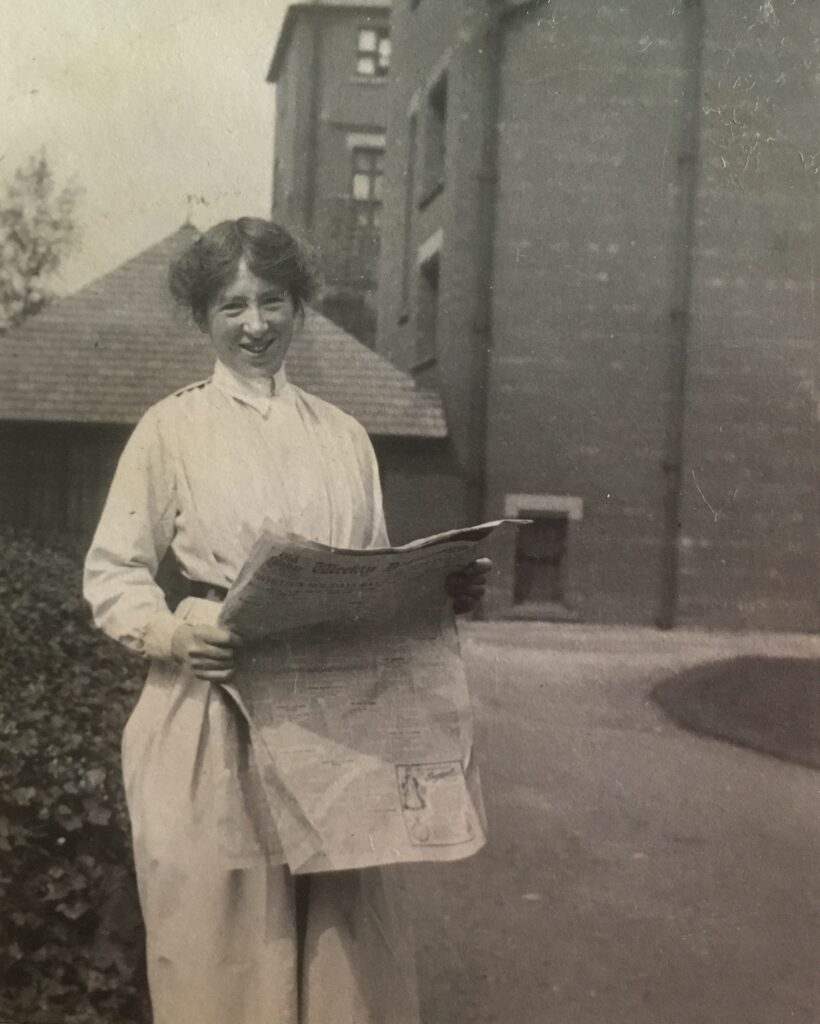
My interest in the poet, novelist, dramatist and superb children’s writer, Winifred M. Letts, is more of a personal interest than an academic one. I would like her to be rediscovered for herself – not just to claim a stake in literary history, nor to feature in an anthology, but to be remembered for so many facets of her life including, of course, her ground-breaking war poetry, the acclaim her BBC-broadcasted children’s stories won, her status as one of the few women to have had more than one play performed in the Abbey Theatre (kindly drawn to my attention by Shirley-Anne Godfrey of the University of Galway), her beautifully produced religious picture books, her charitable works, the insights into the lives of children, both privileged and underprivileged, which her writings display, her kindness and mentoring, and her strong belief in women and in feminism – a term, incidentally, which she herself used as far back as 1928, when writing for the Commonweal magazine, in relation to Saint Hilda and St Brigit.[1]
Read MoreWith Hannah Lynch in Tinos
Iliana Theodoropoulou
“here is at last forgetfulness of sorrow and unrest”[1]
- Tinos
Hannah Lynch visited Greece twice in her relatively short life. Her Greek island was Tinos. Her first journey there was a long stay of two years, from September (probably) 1885 to September 1887. Her second visit was shorter: six weeks from late March to the beginning of May 1902. In 1885 she travelled from Liverpool to Syros on board the “SS Roumelia” with the Papayianni lines.[2] From Syros Hannah crossed by a smaller boat and reached Tinos. Details of her sea journey are included in her novel Rosni Harvey.[3] Her first letter from the island is dated October 1885,[4] but there are indications in the archive of the Ursuline convent at which she stayed in Loutra, that she had arrived in early September.[5]
Lynch would later publish two articles about Tinos, and two novels in which the island is a central setting. The articles were written while she was living and working at the convent, and both were published in the Irish Monthly in 1886.[6] The novels are Rosni Harvey and her “Greek” work of fiction Daughters of Men, originally published only in English but later translated into Greek by Dimitrios Vikelas. Both were published in London in 1892. Her association with the convent is discussed in a previous blog article here.
Read MoreEmerging Voices 6: Éadaoin Regan

Éadaoin Regan is currently in the final year of her PhD in the School of English and Digital Humanities, University College Cork. Her thesis, A method to the madness?: Representations of psychological disorder in Irish women’s fiction 1870-1914, employs feminist psychoanalysis and postcolonial theory in its analysis of representations of mental illness in Irish New Woman fiction by Charlotte Riddell, Sarah Grand, George Egerton, Somerville and Ross, B. M. Croker and Clotilde Graves. Prior to her postgraduate research, she was awarded an MA in Literature from Ulster University (2015) and a BA (Hons) in English and History from UCC (2012).
Read More